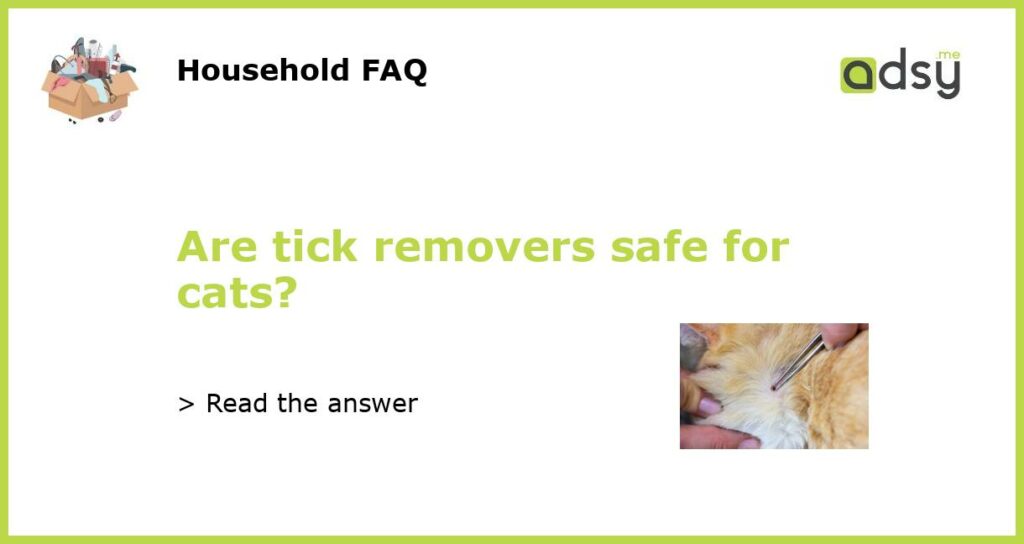Tick Removers: Are They Safe for Cats?
Ticks can be a nuisance for both pets and pet owners. These blood-sucking parasites can carry diseases that can harm your beloved feline friends. As a responsible cat owner, it’s essential to protect your cats from ticks and ensure their safety and well-being. One popular tool used to remove ticks is a tick remover. But are tick removers safe for cats?
Understanding Tick Removers
Tick removers are small devices specifically designed to remove ticks from the skin of animals, including cats. They usually have a hook or V-shaped notch that allows you to safely lift ticks off the skin without leaving the mouthparts embedded. The idea behind tick removers is to ensure that the entire tick is removed, reducing the risk of infection or disease transmission.
When used correctly, tick removers can be an effective tool for removing ticks from cats. They can make the process safer and more efficient compared to using tweezers or fingers, which can potentially leave the tick’s mouthparts embedded in the skin.
The Safety of Tick Removers for Cats
Tick removers are generally considered safe for cats when used properly. However, it’s essential to follow the manufacturer’s instructions and exercise caution during the removal process. Improper use of tick removers can potentially harm your cat.
Before using a tick remover, it’s important to consider the following:
- Choose the right tick remover: There are different types of tick removers available, including hooks, loops, and tweezers. Select a tick remover that is suitable for cats and easy to use.
- Use gentle and steady pressure: When removing a tick, apply gentle and steady pressure to ensure that the entire tick is removed without squeezing its body. Squeezing the tick can increase the risk of disease transmission.
- Be careful not to twist or jerk: Twisting or jerking the tick remover while removing the tick can cause the mouthparts to break off and remain embedded in the skin. This can lead to a localized infection or abscess.
- Inspect the tick after removal: After removing a tick, inspect it to ensure that the entire tick, including its head, has been removed. If any parts are still embedded in the skin, take your cat to a veterinarian for further removal.
Alternatives to Tick Removers
If you’re not comfortable using a tick remover on your cat or if your cat is particularly sensitive or fearful, there are alternative methods of tick removal. Some alternatives include:
- Tweezers: Use fine-tipped tweezers to grasp the tick as close to the skin as possible and gently pull it straight out. Avoid squeezing the tick’s body.
- Tick collars: Tick collars can help repel and kill ticks. They work by releasing chemicals that are toxic to ticks but safe for cats. However, it’s important to choose a tick collar specifically designed for cats and follow the manufacturer’s instructions.
- Topical tick preventatives: There are topical products available that can be applied to your cat’s skin to repel and kill ticks. These products usually need to be applied monthly or as directed by your veterinarian.
It’s important to note that tick preventatives and treatments should be chosen based on your cat’s age, weight, and overall health. Always consult with your veterinarian for the most appropriate tick prevention and removal methods for your cat.
Tick removers can be a safe and effective tool for removing ticks from cats, as long as they are used correctly and with caution. It’s important to choose the right tick remover, apply gentle pressure, and avoid twisting or jerking to ensure the entire tick is removed. If you’re not comfortable using a tick remover, there are alternative methods such as tweezers, tick collars, and topical preventatives. Remember to always consult with your veterinarian for the best tick prevention and removal options for your cat’s specific needs.






